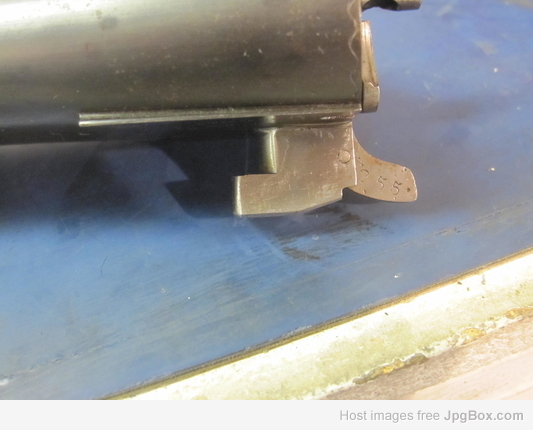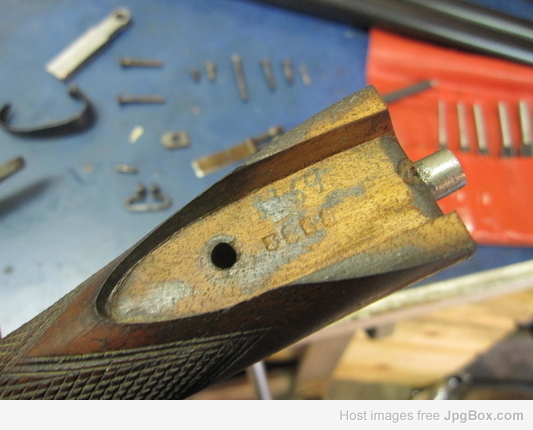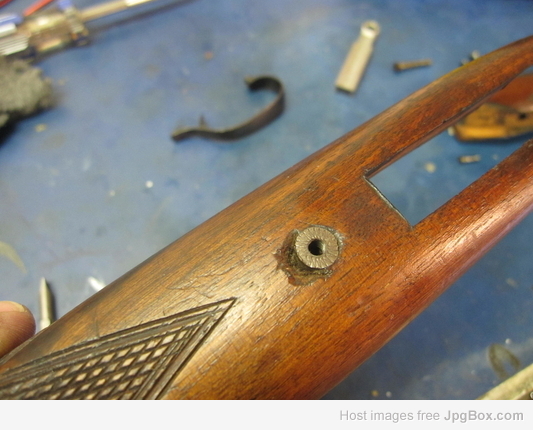Lloyd,
Yes, a 12. If you look at the second photo, you will see where the proof house in St. Etienne marked both barrels as having 18.2mm bores, 9" from the breech. This is a rather snug .724 12 gauge measure.
Nearly every number placed on the bits of this gun does not match the serial number of the gun. This is HIGHLY unusual, but, upon review of my notes and some catalogs, I'm going to speculate that this gun marked the end of a production era, when some distinct changes were made to the design of the R model Darne. A few features on this gun are unusual. The push button safety, separate pins used for main spring and triggers, the ability to access the stock bolt without removing the main spring, and a hole left in the bottom metal to facilitate driving out the metal wedge that is part of the stock attachment. The changes that came early in the 20 century would have saved drilling three holes, notching the pin for the rod for the ejector mechanism, and eliminating two pins. Cost drives the world. Put another way, however, a Darne R model became less modular, and more difficult to dismantle. Few tools are required with this particular design, and none of those tools would be specialized. Perhaps it was discovered that the guns seldom needed to come to bits anyway, and this was a factor in the design changes?
The other possibility, with all the different numbers, on all the different parts, I suppose, is, it is the mother of all lunchbox guns. If you have a theory, mention it. It will be as good as mine, I'm sure.

This is the only number that ends in 55 on the gun. All the numbers seem to be in the same 3200-3300 span, anyway.
The buttstock actually has three different numbers on it, one in pencil, and two stamped in, none of them match the serial number of the barrels, front wood, or the sliding breech. That large circular thing at the front of the wood is the end of the steel rod that travels down the wrist:

I have restored finishes on old guns in the past, and lengthened chambers, forcing cones, or, made other modifications. I'm more sympathetic to leaving old guns alone as I've aged, and lean more toward preservation rather than restoration these days. This little boo-boo will be repaired with epoxy, and rubbed down. I suppose it could have a block of wood cut into the area, and the nut refitted, but, the epoxy will be less labor intensive, and work just as well:

After I assembled it, I brought it to the range and fired it with too long ammunition that was not high pressure, but, not real low, either. This is a Darne after all, it is only Englishmen who need worry about what to feed their guns, or, pigs. Ask any Frenchman.
It throws IC and IM MOD patterns, and was beginning to loosen up a bit after four rounds. Nice.
The chambers do not accept my chamber gauge, not even at the 2 1/2" mark.
Best,
Ted